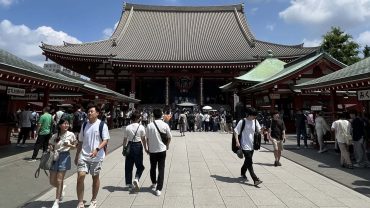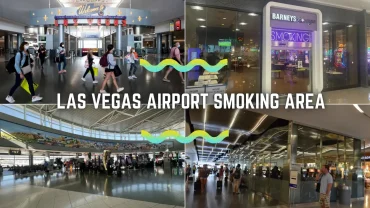In a world with a growing population, it’s fascinating to explore the most densely populated places on Earth. From bustling cities to small regions, these areas are packed with people and showcase the challenges and benefits of high population density. Understanding the factors that contribute to population density can provide insights into how these areas function and the impact on the quality of life for its inhabitants.
Factors such as political, economic, and social issues, as well as physical factors like climate and water supply, all play a role in population density. Overcrowding can present challenges for governments and policymakers, as they strive to provide adequate infrastructure, including housing, sanitation, and transportation. Additionally, health concerns arise in densely populated areas due to a higher risk of spreading diseases.
However, living in a densely populated area can also have its advantages. Studies have shown that higher population density is associated with increased physical activity and lower body mass index, indicating a healthier lifestyle. The efficiency of commuting is also improved in densely populated cities, with shorter travel times and better access to public transportation.
In this blog, we will explore the 20 most densely populated places on Earth today, from all over the world. From Manila, Philippines, to Moscow, Russia, these cities and regions showcase the diversity and challenges of high population density. Let’s dive in and discover more about these crowded places and the factors that contribute to their density.
The 20 Most Densely Populated Places on Earth in Current Times
The world is home to many densely populated places, where people live near one another. These areas can be cities, regions, or even entire countries. In this section, we will explore the 20 most densely populated places on Earth today, from all over the world.
1. Manila, Philippines – A City Bursting at the Seams

Manila, the capital of the Philippines, takes the top spot as the most densely populated city in the world. With a population of over 1.7 million people and an area of 42.88 square kilometers, Manila has a population density of 46,178 persons per sq. km.
The city is bursting at the seams, with a high fertility rate of 3.1 children per woman and a wide disparity in living standards. The wealthy live in highrises and large homes, while the poorest inhabit crowded makeshift communities. Manila is also prone to earthquakes and typhoons due to its location on the Pacific Ring of Fire, posing a greater risk to the densely packed population.
2. Mumbai, India – Where Space Is a Luxury

Mumbai, the financial capital of India, is known for its crowded streets and bustling markets. With a population of over 12 million people and an area of 603 square kilometers, Mumbai has a population density of 32,303 persons per sq. km. The city attracts job seekers from all over India, resulting in a large population and a mix of lavish bungalows and massive slum areas.
The contrast in living standards is stark, with the wealthy living side by side with those in poverty. Despite the challenges of high population density, Mumbai continues to thrive as an economic hub and a melting pot of cultures.
3. Dhaka, Bangladesh – Density Amidst Diversity

Dhaka, the capital and largest city of Bangladesh, is the sixth most densely populated city in the world. With a population of over 8 million people and an area of 306.38 square kilometers, Dhaka has a population density of 29,069 persons per sq. km.
The city serves as the financial, educational, political, and commercial hub of the nation, attracting people from all parts of the country in search of better opportunities. Dhaka is a city of diversity, with a blend of traditional and modern elements. The high population density presents challenges for the local administration in terms of infrastructure, healthcare facilities, and sanitation.
4. Hong Kong, China – Skyscrapers and Crowds

Hong Kong, a special administrative region of China, is famous for its towering skyscrapers and crowded streets. With a population of over 7 million people and an area of just 1,104 square kilometers, Hong Kong has a population density of 6,449 persons per sq. km.
The city’s high population density is a result of limited land availability and a thriving economy. Hong Kong serves as a major financial center and a gateway to China, attracting people from all over the world. Despite the challenges of high population density, Hong Kong offers a unique mix of Eastern and Western cultures, vibrant markets, and breathtaking cityscape.
5. Karachi, Pakistan – Urban Expansion Unchecked

Karachi, the largest city in Pakistan, is experiencing rapid urban expansion and unchecked population growth. With a population of over 14 million people and an area of 591 square kilometers, Karachi has a population density of 25,229 persons per sq. km. The city’s population growth rate, coupled with limited infrastructure, poses numerous challenges for the local administration.
The rapid urbanization has led to overcrowded neighborhoods, traffic congestion, and strained public services. Despite these challenges, Karachi remains an economic hub and a melting pot of cultures, attracting people from all over Pakistan in search of better job opportunities and a higher standard of living.
6. Taipei, Taiwan – A Compact Metropolis

Taipei, the capital of Taiwan, is a compact metropolis with a high population density. With a population of over 2.6 million people and an area of 271.8 square kilometers, Taipei has a population density of 9,583 persons per sq. km.
The city’s high population density is a result of its economic growth, technological advancements, and cultural heritage. Taipei is known for its modern architecture, bustling night markets, and efficient public transportation system. Despite the challenges of high population density, Taipei offers a high quality of life, with excellent healthcare facilities, vibrant arts scene, and a strong sense of community.
7. Tokyo, Japan – Order in Density

Tokyo, the capital of Japan, is a sprawling metropolis known for its orderliness and efficiency. With a population of over 14 million people and an area of 2,188 square kilometers, Tokyo has a population density of 6,417 persons per sq. km. The city’s metropolitan area is home to over 38 million people, making it one of the most densely populated regions in the world.
Despite its high population density, Tokyo offers a high standard of living, with excellent healthcare facilities, efficient public transportation, and a strong emphasis on safety and cleanliness. The city’s unique blend of tradition and modernity, vibrant cultural scene, and technological advancements make it a global powerhouse.
8. Seoul, South Korea – Technology Meets Tradition

In Seoul, South Korea, the blend of technology and tradition creates a unique urban landscape. The city showcases futuristic advancements while paying homage to its rich cultural heritage. As a leading tech hub, Seoul thrives on innovation and progress, seamlessly integrating modern amenities with traditional values. This juxtaposition of old and new shapes Seoul’s identity and offers visitors a glimpse into a society that cherishes its past while embracing the future.
9. Cairo, Egypt – History Packed Tightly

Cairo, Egypt is a city where history is packed tightly amidst its bustling streets. As the capital with a high population density, Cairo blends ancient heritage with modern urban life. The city’s metropolitan area accommodates a large population, reflecting Egypt’s significant population growth rate. Cairo is renowned for its historical landmarks, including the iconic Pyramids of Giza and the Sphinx, making it a cultural hub attracting visitors from around the globe.
10. Jakarta, Indonesia – Islands of People

Jakarta, Indonesia, known as the “islands of people,” is a bustling metropolis with a high population density. Situated on the northwest coast of Java, Jakarta’s total population exceeds 10 million residents. The city’s rapid urbanization has led to significant challenges in infrastructure development and public services. Despite these hurdles, Jakarta remains a vibrant economic and cultural hub in Southeast Asia, attracting people from all walks of life.
11. Lagos, Nigeria – A Rapidly Growing Hub

Lagos, Nigeria, stands as a rapidly growing hub in West Africa. With a high population density, this city is a bustling center of commerce and culture. The dense urban landscape of Lagos reflects its rapid population growth and urbanization trends. As one of the largest cities in Africa, Lagos faces challenges related to infrastructure development and providing essential services to its inhabitants amidst the constant expansion and energy of this vibrant metropolitan area.
12. New York City, USA – The Melting Pot


New York City, USA, is a true melting pot of diversity and culture. With a high population density, it stands out as a bustling metropolis with a rich tapestry of inhabitants from all walks of life. Known for its iconic skyline, vibrant neighborhoods, and a blend of different ethnicities, New York City exemplifies the term “melting pot.” This urban center not only offers a mix of languages, cuisines, and traditions but also serves as a hub for innovation and creativity.
13. São Paulo, Brazil – A Concrete Jungle

São Paulo, Brazil, stands out as a bustling metropolis, earning its title as a concrete jungle. With its towering skyscrapers and urban sprawl, this city epitomizes a vibrant blend of modernity and culture. Home to a diverse population, São Paulo pulsates with energy and activity. Its high population density fuels a dynamic urban landscape marked by commercial centers and bustling streets, making it a prime example of a city constantly on the move.
14. Mexico City, Mexico – Ancient City, Modern Crowds

Mexico City, Mexico, embodies a unique blend of ancient history and modern urban life. With a high population density, it stands out as a bustling metropolis where tradition meets innovation. The city’s vibrant streets are teeming with a diverse crowd, reflecting its rich cultural tapestry.
Amidst the ancient ruins and colonial architecture, Mexico City pulsates with the energy of a dynamic modern society. This fusion of the past and present makes Mexico City a captivating destination for locals and tourists alike.
15. London, UK – A Dense Historic Capital

London, UK, stands as a dense historic capital, renowned for its rich cultural tapestry and vibrant history. With a high population density within its metropolitan area, London is a bustling center of commerce and culture. The city’s urban landscape blends historic architecture with modern skyscrapers, creating a unique juxtaposition of the old and the new amidst its crowded streets. London’s diverse population contributes to its dynamic atmosphere, making it a melting pot of traditions and innovation.
16. Kolkata, India – Colorful Chaos

Kolkata, India, epitomizes colorful chaos with its vibrant streets and rich cultural tapestry. As one of the most densely populated places on earth, Kolkata pulsates with energy as inhabitants navigate a bustling city landscape. The high population density adds to the dynamic essence of this metropolis, where tradition meets modernity in a harmonious blend. From historic landmarks to busy marketplaces, Kolkata’s diverse population contributes to the city’s unique charm and frenetic pace.
17. Buenos Aires, Argentina – Tango in the Streets

Buenos Aires, Argentina, is a vibrant city known for its rich cultural heritage and the passionate dance of tango that resonates through its streets. The city blends European architecture with Latin American flair, creating a unique charm. With a high population density, Buenos Aires is a bustling metropolis where the rhythm of life matches the beat of the tango. This fusion of music, history, and rhythm makes Buenos Aires a captivating destination for those seeking the essence of Argentina.
18. Istanbul, Turkey – Two Continents, One City

Istanbul, Turkey, straddles two continents, Europe and Asia, making it a unique metropolis blending diverse cultures and influences. This strategic location has contributed to its rich history and vibrant atmosphere. The city’s population density is notable, with a mix of modern developments and historical sites creating a dynamic urban landscape. Istanbul serves as a bridge between East and West, offering a fascinating glimpse into the intersection of different worlds within one bustling city.
19. Paris, France – Romance Among the Crowds

Paris, dubbed the “City of Love,” is not just a cultural and fashion hub but also one of the most densely populated places on earth. With its iconic landmarks like the Eiffel Tower and Louvre Museum drawing millions of visitors each year, the city exudes an aura of romance amidst its bustling crowds. From leisurely strolls along the Seine River to charming cafes lining the cobblestone streets, Paris is a city where love and life intertwine seamlessly.
20. Moscow, Russia – A Dense Cultural Tapestry

Moscow, Russia, is renowned for its cultural richness and diversity. The city serves as a captivating blend of history, art, and tradition, creating a dense tapestry of cultural experiences. With a high population density, Moscow stands as a vibrant hub of creativity and innovation, attracting people from all walks of life.
This dynamic metropolis offers a unique mix of old-world charm and modernity, making it a must-visit destination for those seeking to immerse themselves in a rich cultural heritage.
Conclusion
High population density presents unique challenges and opportunities for the places listed in this blog. From bustling Manila to historic Moscow, each city has its own story of managing urban life. Understanding the factors contributing to high population density is crucial in addressing the associated challenges and enhancing the quality of life.
Whether embracing the diversity of Dhaka or the tradition in Istanbul, these densely populated areas showcase resilience and innovation in adapting to the demands of urban living. Explore the world through its vibrant and crowded cities to appreciate the harmonious coexistence of millions in shared spaces.
Frequently Asked Questions
What Factors Contribute to High Population Density?
Factors influencing high population density include physical factors, such as the availability of land and resources, fertility rate, healthcare facilities, and water supply. Here are some key factors to consider:
Physical factors: The availability of suitable land for housing and infrastructure plays a crucial role in determining population density. Areas with limited land resources tend to have higher population density.
Fertility rate: The fertility rate, which is the average number of children born to a woman in her lifetime, can impact population density. Higher fertility rates can lead to a larger population and increased density.
Healthcare facilities: The availability of healthcare facilities and services can impact population density. Areas with better healthcare infrastructure tend to attract more people, leading to higher population density.
Water supply: Access to clean water is essential for sustaining a population. Areas with reliable water supply systems can support larger populations, resulting in higher population density.
These factors, among others, contribute to the high population density observed in certain areas around the world.
What factors contribute to a place becoming densely populated?
Several factors contribute to a place becoming densely populated. These factors can vary depending on the location and specific circumstances, but some common factors include:
Commercial center: Cities that serve as commercial centers, with numerous job opportunities and economic activities, tend to attract a large population. These cities offer better employment prospects, which leads to an influx of people.
Suburban areas: Suburban areas located near major cities often experience high population density due to their proximity to job opportunities and urban amenities. Many people choose to live in suburbs for a better quality of life while still having access to urban facilities.
Rural areas: In some cases, rural areas can also become densely populated due to agricultural activities or specific industries. These areas may offer employment opportunities that attract a large number of people.
Other factors that contribute to a place becoming densely populated include transportation infrastructure, availability of housing, and cultural or historical significance. It is important to consider the specific context and dynamics of each location to understand the factors contributing to its population density.
Are there any challenges associated with living in densely populated areas?
Living in densely populated areas can present several challenges, including:
Privacy: Densely populated areas often have limited personal space, leading to a lack of privacy for individuals and families.
Healthcare facilities: The demand for healthcare services can be higher in densely populated areas, which may strain healthcare facilities and result in longer wait times for medical care.
Sanitation: Maintaining proper sanitation can be challenging in densely populated areas, leading to issues with waste management and the spread of diseases.
Infrastructure: Densely populated areas may face challenges in providing adequate infrastructure, such as transportation, utilities, and housing, to support the growing population.
Noise and pollution: Densely populated areas tend to have higher levels of noise and air pollution, which can impact the well-being and quality of life of residents.
These challenges can vary depending on the specific location and the level of urban development. Local authorities and policymakers need to address these challenges to ensure the well-being and quality of life of residents in densely populated areas.
How does population density impact the quality of life in a particular area?
Population density can have a significant impact on the quality of life in a particular area. Some key aspects affected by population density include:
Healthcare facilities: Higher population density often leads to increased demand for healthcare services, putting pressure on existing facilities and potentially impacting access to healthcare.
Water supply and sanitation: High population density can strain water supply systems and sanitation infrastructure, leading to issues with clean water access and waste management.
Housing and living conditions: Densely populated areas may experience overcrowding, resulting in limited housing options and higher living costs. This can impact the affordability and quality of housing.
Transportation: High population density can lead to increased traffic congestion and longer commute times, impacting the overall convenience and accessibility of transportation systems.
Privacy and social interactions: Densely populated areas often have limited personal space, leading to a lack of privacy. However, they also provide opportunities for social interactions and community engagement.
The table below summarizes the impact of population density on various aspects of quality of life:
| Aspects | Impact of Population Density |
| Healthcare | Increased demand, potential strain on facilities |
| Water supply | Strain on systems, potential water shortages |
| Sanitation | Waste management challenges |
| Housing | Limited options, higher costs |
| Transportation | Increased congestion, longer commute times |
| Privacy | Limited personal space, lack of privacy |
| Social interactions | Opportunities for community engagement |
Population density plays a crucial role in shaping the overall quality of life in a particular area, and policymakers need to address the challenges associated with high population density to ensure a sustainable and livable environment for residents.





Comment (0)